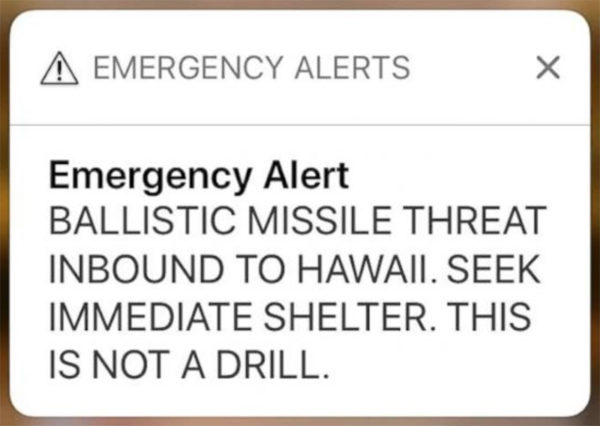
I wrote a short piece for The Washington Post on the Hawaiian nuclear false alarm last Saturday.
The Hawaiian incident was an unacceptable mistake, indicative of a poorly-designed system. False alarms are dangerous for a lot of reasons, not the least in that there will be a significant amount of doubt about the veracity of any future messages from the same source (or any other governmental source).
But we should at some level take it as a welcome wake-up call. The possibility of a nuclear attack is real. It won’t go away tomorrow. People need to know what they ought to do during one, so they don’t (as many were reported to have done) run out into the open —the absolute worst thing one can do, if one is interested in improving one’s chances of survival. And there are things that should be done, at a diplomatic level, to reduce the chances of it happening.
If a missile was in-bound to Honolulu from North Korea, it would only take about 30 minutes to reach its target after launch — less time than it took the Hawaiian agency to revoke its warning! Assuming it was as powerful as the last North Korean nuclear test, it could kill upwards of 140,000 people almost immediately, and injure another 170,000. Most Hawaiians would survive — and have to deal with the cleanup, the lingering health issues, and the political and literal fallout. It would not be the end of the world for all, but it would be a disaster unparalleled in American history, killing nearly a hundred times more people than the attack on Pearl Harbor or the 9/11 attacks. It could happen. To embrace fatalism, or to simply deny the threat should not exist, is not nearly enough.


Ars Technica published a shot of the offending interface this morning. It’s every bit as bad, if not worse, than everyone imagined it must be. Roughly on par with – if not substandard to – Yahoo!’s index, circa 1995.
https://arstechnica.com/information-technology/2018/01/the-interface-to-send-out-a-missile-alert-in-hawaii-is-as-expected-quite-bad/
That is… a horrific interface.